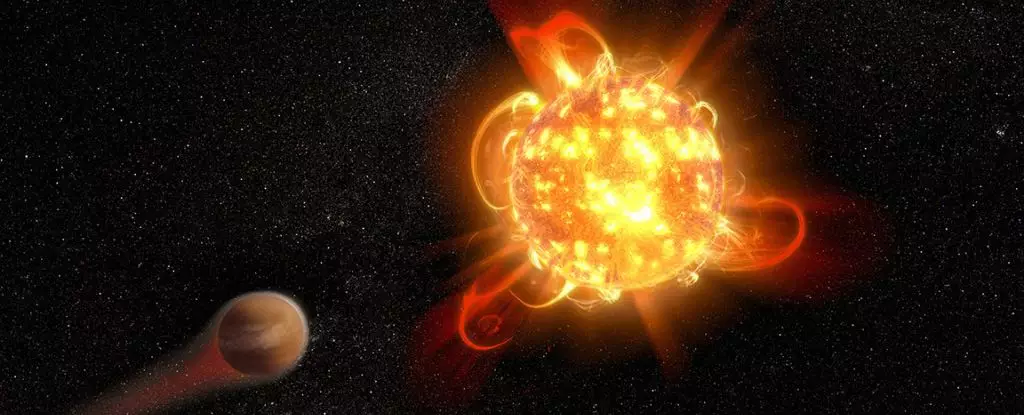When we turn our gaze to the cosmos, red dwarfs, classified as M-class stars, captivate our curiosity. They are relatively diminutive compared to our Sun, marked by reduced mass and cooler surface temperatures. In the vast expanse of the Milky Way, red dwarfs reign; estimates suggest that they make up approximately 70% of the stellar population. Their long lifespans, due to a slow fuel-burning process, render them intriguing prospects in the search for extraterrestrial life. The theory that planets within their habitable zones may nurture life has drawn the attention of astronomers and astrobiologists alike.
Despite their abundance and potential for hosting habitable planets, red dwarfs possess an unsettling characteristic: they exhibit an unusually high frequency of stellar flares. These dramatic outbursts of energy raise significant questions about the conditions that might prevail on planets orbiting these stars. A recent paper sheds light on these flares, suggesting that their effects on potential habitable planets may be far more severe than previously estimated.
Stellar flares are violent eruptions that result in the release of vast amounts of energy, including electromagnetic radiation across various wavelengths. For a long time, studies focused predominantly on these phenomena in optical wavelengths, excluding a critical component: ultraviolet (UV) radiation. The newfound emphasis on UV radiation, particularly from the near and far UV ranges, illustrates a significant gap in the existing body of knowledge. The implications of this gap may alter the prevailing understanding of the habitable potential of planets in red dwarf systems.
Using a decade’s worth of data from the now-defunct GALEX space telescope, scientists scrutinized 182 distinct stellar flares from M-class stars. Their findings point to a startling reality: the output of UV radiation from these flares is significantly higher than previously assumed. This heightened UV flux, particularly from the far UV range, poses serious questions regarding the atmospheric integrity and habitability of orbiting planets.
The relationship between radiation exposure and planetary atmosphere is intricate. High-energy UV photons can catalyze the formation of organic compounds essential for life; however, excessive doses can strip away an atmosphere, eradicating protective layers such as ozone. This duality underscores the importance of understanding not merely whether planets can sustain liquid water, but also their ability to maintain a stable atmosphere capable of shielding life from harmful radiation.
The fundamental flaw in previous models, which often treated flare emissions through a blackbody spectrum, is becoming apparent. Researchers uncovered that almost all examined flares produced UV outputs far exceeding expectations based upon these models. Specifically, the concept of modeling stellar emissions at a temperature of 9,000 K was proven insufficient to account for the observed far UV emissions. This discrepancy suggests that prior studies may have underestimated the risk posed by the radiation environment of red dwarf systems significantly.
The findings from this current research hold grave implications for astrobiology. While red dwarfs may host planets that fall within distance ranges suitable for liquid water, the imminent risk presented by intense UV radiation could negate those planets’ habitability. Even with favorable surface temperatures, the absence of a robust atmosphere could preclude the necessary conditions for life.
In essence, these red dwarf systems, once seen as promising areas in the hunt for extraterrestrial organisms, may be fraught with challenges that render them inhospitable.
As scientists continue to unravel the complexities of red dwarfs and their associated stellar flares, a significant shift in our understanding of habitable zones around these stars is underway. The findings serve as a stark reminder of the intricate balance required for life to thrive, where even seemingly advantageous conditions can be undermined by the forces of nature. The exploration of the cosmos remains a profound journey, where each discovery encourages us to rethink our assumptions and expand our definitions of where life might reside.

Leave a Reply